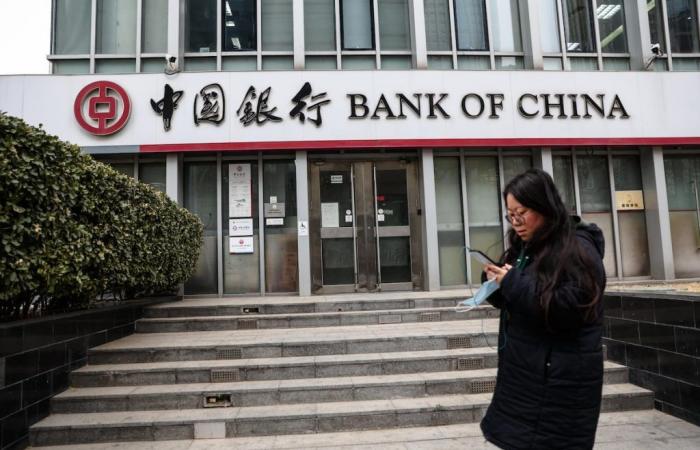
The People’s Bank of China (PBOC, central bank) announced today that it will maintain its reference interest rate at 3.45% for the eleventh consecutive month. This, despite the fact that the demand for credit remains stagnant and that prices have been falling for months, in a deflationary streak that has not been seen for decades. One of the reasons for not lowering rates and stimulating the economy is the fear that the yuan will be devalued against the dollar, due to the interest rate differential.
China has set the daily reference rate for its currency at its lowest level since November. The Chinese central bank sets the official exchange rate at 7.1192 yuan per dollar, which represents an increase of 33 points, the largest in two months. This move comes as the dollar approaches its high this year.
The pressure on the yuan restricts policymakers’ room for maneuver. China needs low rates to revive its economy, but lowering rates takes it away from the levels of the price of money in the United States, which is still at 5.5% and, according to the Federal Reserve, will remain high for longer.
During its last period of economic expansion, China based its growth on low rates and very intensive use of credit, especially for the development of the real estate and infrastructure sectors. Since 2020, that model has been shipwrecked and the country is still digesting the burst of the real estate bubble.
In the monthly update published on its website by the central bank, the institution indicated that the one-year credit reference rate (LPR) will remain at 3.45% until at least a month from now.
This indicator, established as a reference for interest rates in 2019, serves to set the price of new loans – generally for companies – and those with variable interest that are pending repayment.
Its calculation is carried out on the basis of contributions to the prices of a series of banks – including small lenders that tend to have higher financing costs and greater exposure to non-performing loans -, and its objective is to lower borrowing costs and support to the ‘real economy’.
The last reduction in the one-year LPR dates back to August 2023, when the BPC announced a 10-point cut, going from 3.55% to the current 3.45%, a more prudent decision than analysts anticipated at the time. which pointed to a drop of 15 basis points.
Follow all the information Five days in Facebook, x and Linkedinor in our newsletter Five Day Agenda
Newsletters
Sign up to receive exclusive economic information and the financial news most relevant to you
Sign up!





